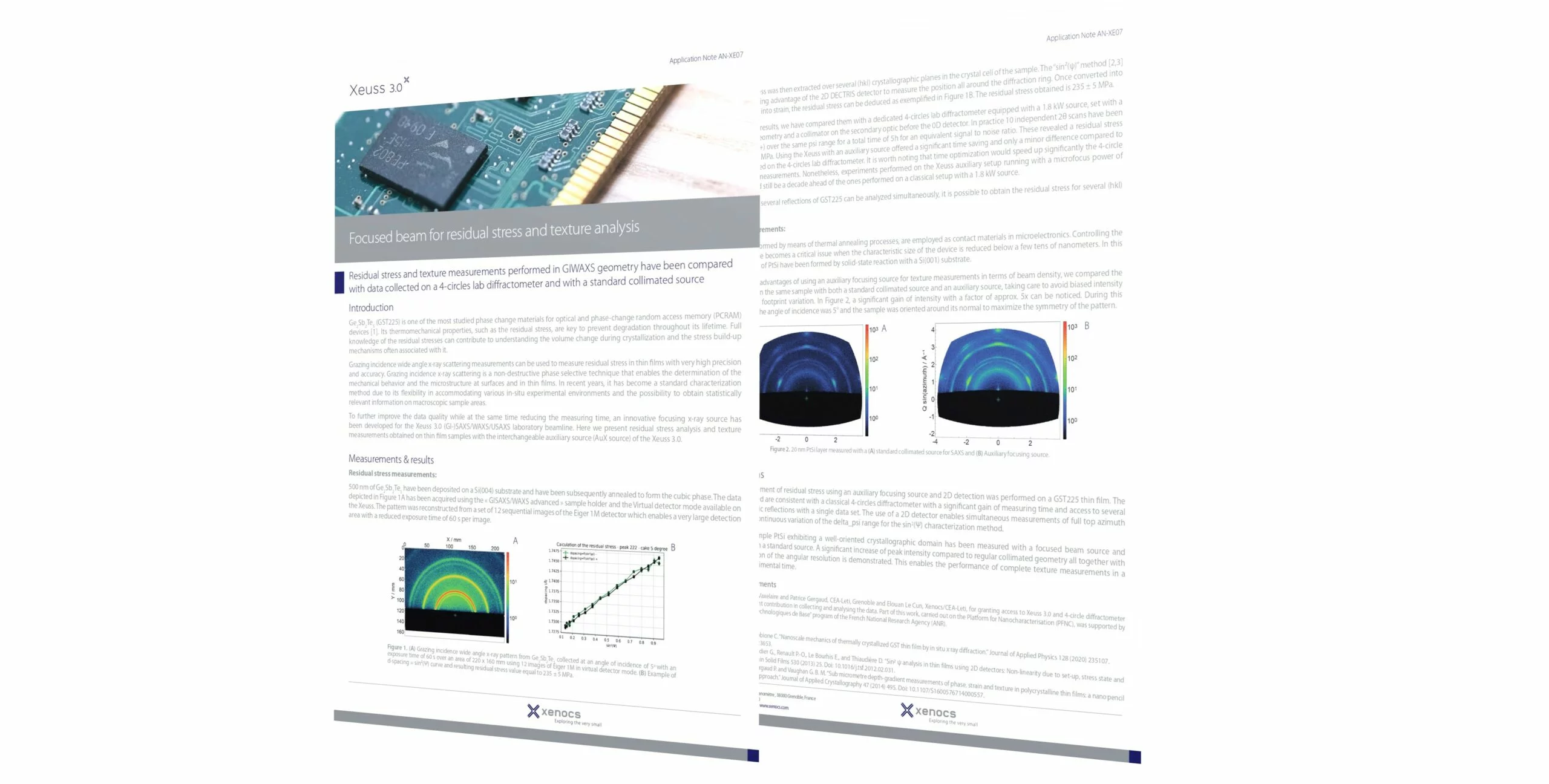Residual stress and texture have been measured by Small Angle/Wide Angle X-ray Scattering using the focusing source available on the Xeuss 3.0.
Ge2Sb2Te5 (GST225) is one of the most studied phase change materials for optical and phase-change random access memory (PCRAM) devices [1]. Its thermomechanical properties, such as the residual stress, are key to prevent degradation throughout its lifetime. Full knowledge of the residual stresses can contribute to understanding the volume change during crystallization and the stress build-up mechanisms often associated with it.
Grazing incidence wide angle X-ray scattering measurements can be used to measure residual stress in thin films with very high precision and accuracy. Grazing incidence X-ray scattering is a non-destructive phase selective technique that enables the determination of the mechanical behavior and the microstructure at surfaces and in thin films. In recent years, it has become a standard characterization method due to its flexibility in accommodating various in-situ experimental environments and the possibility to obtain statistically relevant information on macroscopic sample areas.
To further improve the data quality while at the same time reducing the measuring time, an innovative focusing X-ray source has been developed for the Xeuss 3.0 (GI-)SAXS/WAXS/USAXS laboratory beamline. Here we present residual stress analysis and texture measurements obtained on thin film samples with the interchangeable auxiliary source (AuX source) of the Xeuss 3.0.


































